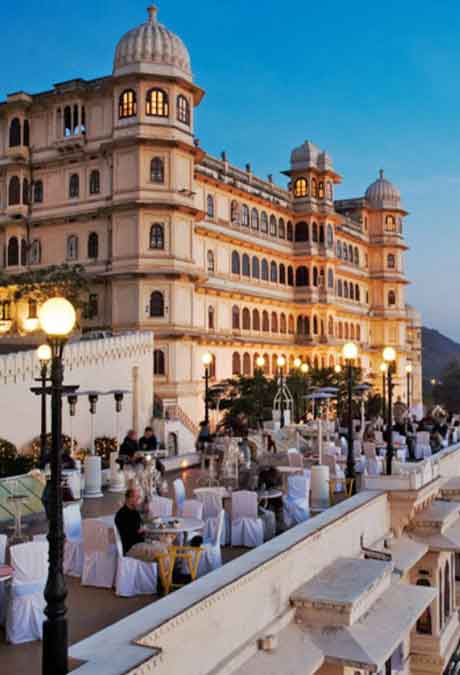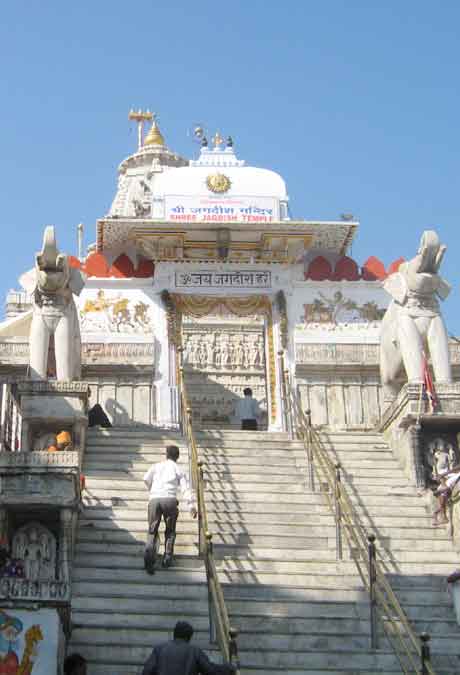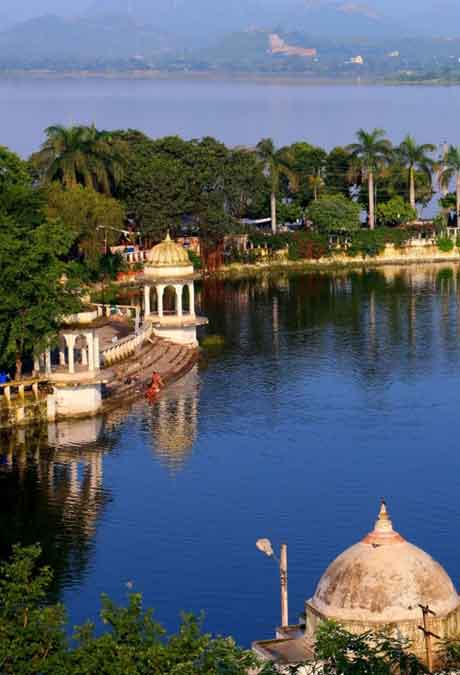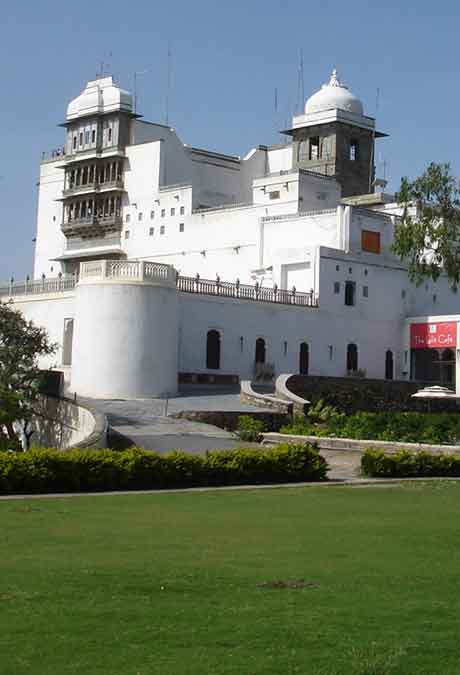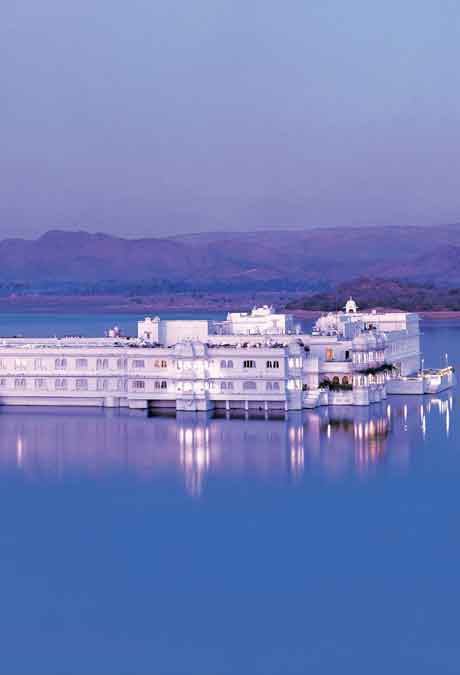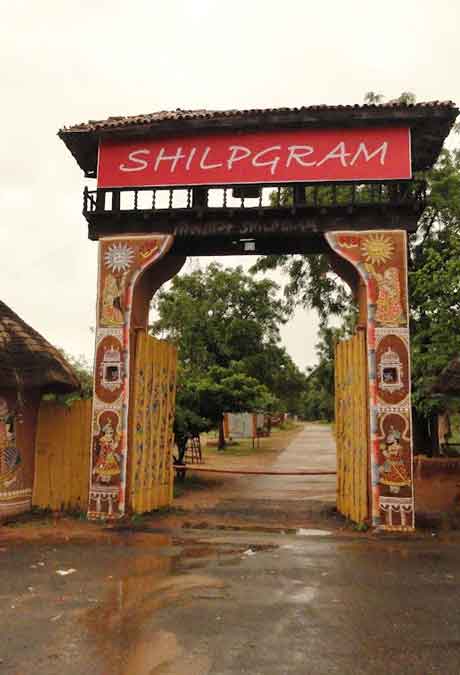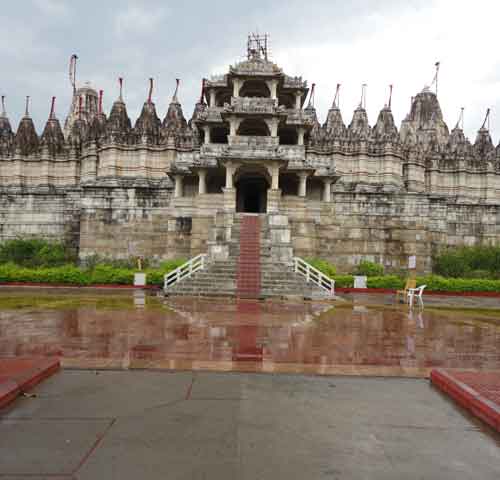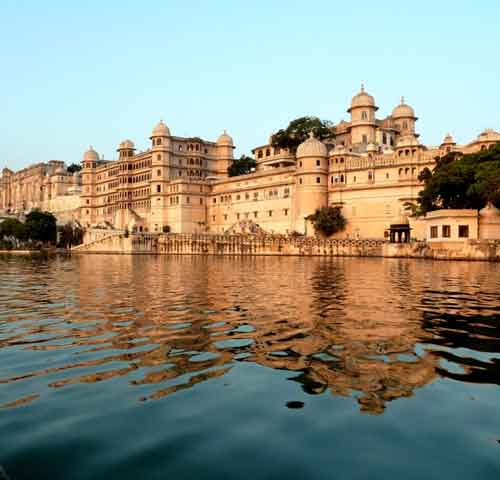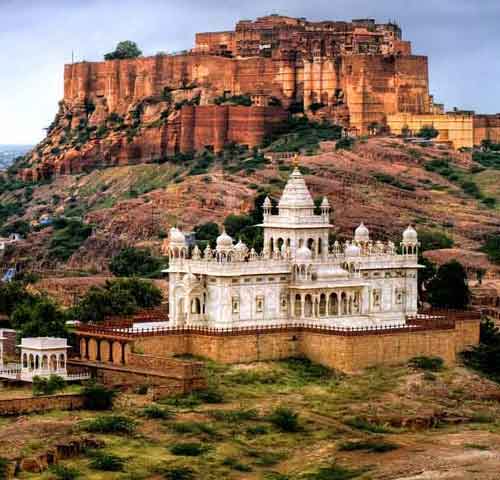Udaipur Tour Itinerary
Udaipur, the capital of the former princely state of Mewar is a beautiful city in Rajasthan, India. Udaipur city is also referred to as the "Venice of the East", the "Most Romantic City of India" and the "Kashmir of Rajasthan". Udaipur the “City of Lakes” is one among the most romantic and most beautiful cities of India. The city of Dawn, Udaipur is a lovely land around the azure water lakes, hemmed in by the lush hills of the Aravalis. A vision in white drenched in romance and beauty, Udaipur city of Rajasthan state is a fascinating blend of sights, sounds and experiences - an inspiration for the imagination of the poets, painters and writers. Udaipur's kaleidoscope of fairy-tale palaces, lakes, temples, gardens and narrow lanes strewn with stalls, carry the flavor of heroic past, epitomizing valor and chivalry. Their reflection in the placid waters of the Lake Pichhola is an enticing sight.
Udaipur Attractions
Udaipur City Palace
The City Palace towers over the Pichola Lake. The balconies, cupolas and towers of the palace give a wonderful view of the lake and the surrounding city. This complex actually consists of four major and several minor palaces that collectively form the magnificent City Palace. The main part of the palace is now preserved as a museum displaying ancient artefacts.
Lake Palace
Now a hotel, The Lake Palace was originally called Jag Niwas Palace and served as a summer palace. Built between 1743 and 1746 on the island near Jagmandir Palace in Lake Pichola, the palace, which faces east, is a wondrous sight to behold. The walls made of black and white marbles are adorned by semi-precious stones and ornamented niches. Gardens, fountains, pillared terraces and columns line its courtyards.
Jag Mandir
Jag Mandir is a palace built on an island on the Lake Pichola. Also called the ‘Lake Garden Palace’, the construction for this began in 1551 and was completed around 1652. The royal family used the palace as its summer resort and for hosting parties. Interestingly, Prince Khurram - later Emperor Shah Jahan - was given shelter here when he rebelled against his father Emperor Jahangir. The palace had such an impact on Emperor Shah Jahan that it went on to become the inspiration for one of the most magnificent Wonders of the World, the Taj Mahal.
Monsoon Palace
Situated just outside Udaipur, this 19th century palace is built on top of Bansdara Mountain. Used as a monsoon palace and hunting lodge, its builder, Maharana Sajjan Singh, originally planned to make it an astronomical centre. The plan was cancelled with Maharana Sajjan Singh's premature death. It is still an awe-inspiring sight on the Udaipur skyline and offers spectacular views of the city and the areas around.
Ahar Museum
Ahar Museum is in close proximity to an impressive cluster of cenotaphs of the Maharanas of Mewar. The museum has a small, but rare collection of earthen pottery. You can also browse through sculptures and archaeological finds, a few dating back to 1700 BC. A 10th century metal figure of Buddha is a special attraction here.
Jagdish Temple
An example of the Indo-Aryan style of architecture, Jagdish Temple was built in 1651 and continues to be one of the most famous temples in Udaipur. Dedicated to Lord Vishnu, the structure is an architectural marvel with carved pillars, graceful ceilings and painted walls. This three-storied temple was built by Maharana Jagat Singh.
Fateh Sagar Lake
This delightful lake, bordered by hills and woodlands, lies to the north of Lake Pichola. This artificial lake is connected to Lake Pichola by a canal. The lake houses the beautiful Nehru Island as well as an islet on which stands the Udaipur Solar Observatory. It was inaugurated by the Duke of Connaught and was initially called Connaught Bundh.
Saheliyon ki Bari
Built by Rana Sangram Singh as a garden for women, Saheliyo-ki-Bari or the Courtyard of the Maidens is a popular tourist destination. Along with a small museum, it has several attractions such as marble elephants, fountains, kiosks and a lotus pool.
Bagore ki Haveli
Bagore-ki-Haveli is located by Lake Pichola, at Gangaur Ghat. Amar Chand Badwa, the Prime Minister of Mewar, built it in the 18th century. The massive palace has over a hundred rooms that display costumes and modern art. The glass and mirrors in the interiors are structured in classical haveli style.
Shilpgram
Situated 7 kms west of Udaipur near Lake Fateh Sagar is the Centre's Shilpgram - the Rural Arts and Crafts Complex. Spread over 70 acres, and surrounded by the Aravallis, the Rural Arts and Crafts Complex has been conceived as a living museum to depict the lifestyles of the folk and tribal people of the west zone.
Haldighati
Haldighati is a famed mountain pass in the hills of the Aravalli Range. The pass, about 40 kilometres from Udaipur, connects the districts of Rajsamand and Pali. The pass gets its name from the yellow-coloured soil of the region (turmeric is called haldi in Hindi).
Jaisamand Lake
Jaisamand Lake is known for being the second largest man-made sweet water lake in Asia. It is popular among the locals as a weekend picnic destination. Locals say that the lake was constructed to halt the waters of Ruparel River. This lake boasts of a large island, which is home to various species of birds, at its centre.
How to Reach here
Air : Dabok Airport, also known as Maharana Pratap Airport is the closest at about 25 km northeast of the city centre. There are daily flights from Delhi and Mumbai on Jet Airways, Air India and SpiceJet.
Rail : Udaipur is connected by rail to several major cities in India including Chittorgarh, Ahmedabad, Ajmer, Sawai Madhopur, Jaipur, Agra, Delhi, Mumbai and Khajuraho.
Road : Udaipur is easily accessible by road from every major destination in India, including Chittorgarh, Ahmedabad, Jodhpur, Ajmer, Sawai Madhopur / Ranthambore, Jaipur, Bikaner, Agra, Delhi, Mumbai and Khajuraho.
